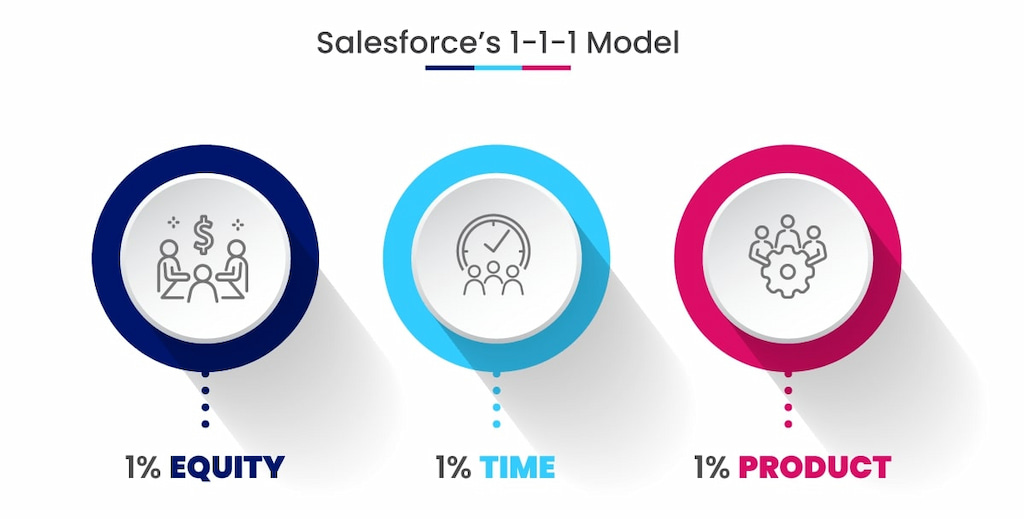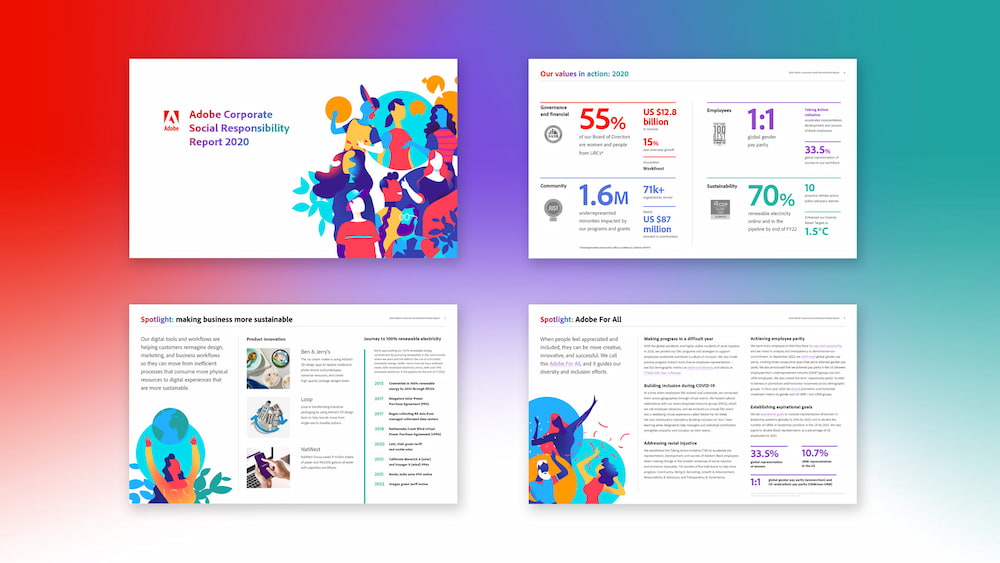A code of conduct is an essential document for any organization, guiding employee behavior and establishing standards for ethical practices. In this article, we’ll explore examples of code of conduct that companies use to foster a positive work environment, align team actions with organizational values, and comply with legal standards. Whether focusing on professionalism, anti-harassment policies, or conflict of interest rules, these code of conduct examples offer insights into how organizations can shape workplace culture.
What is a Code of Conduct?
An organization’s code of conduct is a set of guidelines or rules that outline the ethical standards, values, and behaviors expected from employees within an organization. The purpose of a business code of conduct is to provide a framework that helps individuals make decisions in alignment with the company’s mission, vision, and legal requirements. It fosters a consistent, ethical work environment where employees understand how to act responsibly in various situations, reducing the potential for conflicts, misconduct, or legal issues.

The primary purpose of a code of conduct includes:
- Setting clear expectations for employee behavior and professional conduct
- Promoting integrity and accountability, ensuring employees act in the organization’s best interest
- Encouraging a positive and respectful workplace culture, helping prevent discrimination, harassment, and other unethical practices
- Providing a framework for decision-making, guiding employees when faced with ethical dilemmas
- Protecting the organization by ensuring legal compliance and safeguarding the company’s reputation
By clearly outlining acceptable conduct and providing consequences for violations, a code of conduct helps maintain a harmonious and legally compliant workplace.
What to Include in a Code of Conduct
A code of conduct serves as a vital tool for establishing clear expectations around behavior and ethics within an organization. By providing specific guidelines, it helps employees navigate their responsibilities, maintain a respectful workplace, and ensure compliance with relevant laws and policies. Here are the key elements that one should include in any well-crafted code of conduct:
- 📜 Introduction and purpose: Begin by outlining the code’s purpose, explaining how it supports the company’s ethical framework and the workplace culture.
- 💡 Core values and principles: These are the foundation of the code, covering integrity, respect, and accountability, and helping employees align their actions with company goals.
- 🤝 Expected behavior: Define the expected standards for conduct, such as professionalism, communication, and interaction with colleagues and clients.
- ⚖️ Conflicts of interest: Address how employees should handle situations where personal interests may interfere with their professional duties.
- 🏛 Compliance with laws and regulations: Reinforce the importance of adhering to applicable laws, such as anti-discrimination policies, data protection, and workplace safety.
- 🚫 Anti-discrimination and harassment policies: Clearly state the company’s zero-tolerance approach to discrimination, harassment, and bullying in the workplace.
- 🔒 Confidentiality and data protection: Provide guidelines on handling sensitive information, ensuring that employees understand their responsibility to maintain confidentiality.
- 📢 Reporting and whistleblowing: Encourage employees to report unethical behavior with a safe, confidential process, protecting whistleblowers from retaliation.
- ⚠️ Disciplinary actions and consequences: Outline the potential repercussions for failing to adhere to the code, ensuring transparency in disciplinary measures.
- 🔄 Review and update: Emphasize the importance of regularly reviewing and revising the code to stay current with legal and societal changes.
Incorporating these elements in a code of conduct ensures that all employees are on the same page, fostering a positive attitude and a healthy, compliant, and ethical work environment. Now let’s focus on code of conduct examples for employees.
Code of Conduct Examples
Apple
Apple’s statement about holding themselves to high standards highlights their dedication to integrity, honesty, and fairness in all aspects of their business. Their commitment extends beyond product development and partnerships, ensuring ethical behavior across all areas of their operations.
- Protecting confidential information – Employees handle sensitive data, such as customer details, trade secrets, and business strategies, with the utmost care to maintain privacy and security. Breaching confidentiality, whether through negligence or deliberate actions, is a serious violation of the company’s values.
- Conflicts of interest – Apple’s conduct guidelines underscore the importance of avoiding conflicts of interest. Employees should act in the best interests of the company and its customers, ensuring that personal or external interests do not compromise their professional responsibilities. Any situation that may appear to influence decision-making must be disclosed, reviewed, and managed appropriately.
- Environmental responsibility – Apple is dedicated to minimizing its environmental impact. This includes using renewable resources, reducing energy consumption, and working towards a circular economy. The company actively works to reduce its carbon footprint and encourages its employees and partners to adopt sustainable practices.
- Equal opportunity – The company strives to create a diverse and inclusive workplace, offering equal chances for advancement regardless of race, gender, sexual orientation, or any other characteristic. By promoting fairness and inclusivity, Apple ensures that every employee has the opportunity to thrive and contribute to the company’s success.
Microsoft
Microsoft’s code of conduct emphasizes integrity, accountability, and respect for user privacy. The company aims to set a high bar for responsible innovation and workplace inclusivity.
- User data protection – Microsoft prioritizes the privacy and security of user data, adhering to strict compliance standards globally, such as the GDPR in the EU. Employees are expected to handle user information responsibly, with strict limits on data access and usage.
- AI ethics – Microsoft leads in responsible AI development, with a dedicated AI Ethics board to oversee projects and ensure they align with transparency, fairness, and human-centered values.
- Employee inclusion – Through its commitment to diversity, Microsoft ensures that all employees feel respected and valued. Programs to increase gender diversity and support marginalized communities are integral to the corporate culture.
- Environmental initiatives – Microsoft has committed to becoming carbon-negative by 2030, engaging in projects that reduce emissions and waste while working towards renewable energy reliance across all operations.
Amazon
Another code of conduct example, Amazon highlights customer satisfaction, leadership accountability, and workplace safety, promoting a responsible and transparent operational approach.
- Customer obsession – Amazon’s guiding principle is putting customers first, shaping product innovation and service delivery. Employees are encouraged to consider customer needs as a priority in decision-making processes.
- Leadership principles – Amazon maintains 16 leadership principles that form the backbone of its workplace culture, promoting accountability, honesty, and high standards in all areas of the business.
- Workplace safety – The company has detailed guidelines to ensure the safety and well-being of employees and contractors. Regular audits and improvements focus on creating a safer work environment, especially in fulfillment centers.
- Sustainability commitments – Amazon has pledged to reach net-zero carbon emissions by 2040. Through initiatives like The Climate Pledge, it encourages partners and other companies to join the movement toward carbon neutrality.

Procter & Gamble
Procter & Gamble’s code revolves around customer trust, sustainability, and respect for all employees, aiming for ethical business practices and product transparency.
- Customer trust – P&G is dedicated to transparency, ensuring product claims are accurate and that customers can trust the brand’s integrity. The company regularly tests products for safety and effectiveness.
- Sustainability – P&G aims to reduce its environmental footprint by lowering emissions, conserving resources, and promoting eco-friendly packaging solutions.
- Workplace respect – Respect for all employees is central to P&G’s values. The company emphasizes diversity and inclusivity through equal-opportunity hiring and training programs.
- Innovation ethics – P&G’s innovation strategy focuses on producing high-quality, safe products. Research and development teams prioritize ethics to balance performance with environmental impact.
Salesforce
Salesforce’s code of conduct is anchored in customer-centric principles, data ethics, and a commitment to social good, guiding its approach to customer relationships, workplace culture, and community engagement.
- Customer success – Salesforce prioritizes customer needs in every business decision, aiming to create products and services that deliver measurable value for clients. The company continuously gathers customer feedback to tailor solutions, ensuring that their software tools drive tangible success across industries.
- Data responsibility – The company’s privacy protocols are designed to protect customer data from unauthorized access, in alignment with regulatory requirements like GDPR. They utilize advanced encryption and regularly audit their security practices, maintaining a high standard of data protection to ensure that customer information remains safe.
- Inclusion – The company’s culture emphasizes respect, equity, and representation, and they invest in resources like employee resource groups, unconscious bias training, and diversity initiatives. Inclusion is also reflected in their recruitment strategies and career advancement programs, as Salesforce strives to provide equal opportunities and foster a workplace where everyone feels valued.
- Community impact – Through its “1-1-1 model” (1% of time, 1% of product, and 1% of equity dedicated to philanthropy), Salesforce donates resources and empowers employees to give back. This model supports various causes, including education, disaster relief, and environmental sustainability, amplifying the positive impact of its workforce in communities worldwide.

Johnson & Johnson
Johnson & Johnson’s code of conduct is built around values that prioritize patient safety, compassion, transparency, and corporate responsibility. This code is integral to how they approach healthcare, customer relations, and their role in society.
- Patient safety – The company upholds rigorous safety protocols and quality control standards in its research, manufacturing, and distribution processes. This focus extends across all products, from pharmaceuticals to medical devices, with a priority on reducing patient risks and maintaining product reliability.
- Compassion – The company actively supports numerous charitable initiatives, from providing free healthcare products in underserved areas to supporting mental health programs and disaster relief efforts. Compassionate care is a significant part of their employee culture, encouraging empathy in all interactions.
- Transparency – Johnson & Johnson is committed to clear, truthful information about its products, business practices, and research outcomes. This includes publishing study results, detailing side effects, and providing educational materials to ensure users are informed about product usage and potential risks.
- Corporate responsibility – The company prioritizes ethical practices in all business dealings and strives to create a positive impact through environmental sustainability. Their initiatives include reducing carbon emissions, investing in renewable energy, and improving waste management in their facilities worldwide.
Adobe
Adobe’s code of conduct emphasizes creativity, integrity, and responsibility, establishing a framework for employee behavior that aligns with the company’s innovative spirit and ethical standards.
- Creativity and innovation – Adobe fosters a work environment where employees are encouraged to think outside the box and develop solutions that push the boundaries of design and digital media. This culture of innovation is supported by policies that ensure employees feel free to share new ideas and take calculated risks to advance the company’s mission.
- Data privacy and security – Adobe places a high priority on protecting customer data, adhering to privacy regulations, and implementing robust security measures to safeguard information. Employees are trained on best practices for handling data responsibly, ensuring that customer information is kept confidential and secure.
- Diversity and inclusion – The company’s initiatives include employee resource groups, anti-discrimination training, and policies that support diversity in hiring and career advancement, reflecting its dedication to creating an equitable environment.
- Social responsibility – Adobe encourages its workforce to contribute to social and environmental causes, focusing on areas such as digital literacy, education, and sustainability. Through volunteer programs, Adobe empowers employees to make a positive difference in their communities, aligning with the company’s commitment to social impact.

IKEA
IKEA centers its code of conduct around ethical sourcing, equality, and sustainability, all aimed at fostering a positive impact on customers, employees, and the broader community.
- Sustainable development – IKEA is committed to reducing its environmental impact by using renewable materials and promoting energy-efficient products. The company implements green logistics and supports circular economies through recycling and product life-cycle management.
- Respect for people – At the core of IKEA’s values is respect for all individuals. The company encourages a workplace where inclusivity, fairness, and equal opportunities are fundamental to every action taken by employees.
- Fair business practices – IKEA focuses on maintaining fair and transparent business dealings with partners and stakeholders. This involves upholding human rights, providing safe working conditions, and ensuring that its supply chains operate ethically and responsibly.
- Community engagement – IKEA believes in making a positive contribution to the communities where it operates. Through various initiatives, including supporting children’s education and disaster relief efforts, IKEA ensures its business has a broader social impact.
How to Implement and Distribute Your Code of Conduct
Implementing and distributing your code of conduct effectively involves creating a clear framework for its introduction, integration into the company culture, and ensuring it reaches every member of the organization. Here are some steps to ensure proper implementation and distribution:
💪 Leadership endorsement and communication
Ensure that senior leadership openly supports the code of conduct. Their commitment should be reflected in their actions and decisions, as employees are more likely to follow the code when they see it valued at the top levels. Use internal channels such as company-wide meetings, emails, and intranet announcements to communicate the leadership’s endorsement of the code. Leaders should consistently communicate how the code aligns with the company’s values and strategic goals. Regular updates through newsletters or intranet posts can remind employees of its importance.
📚 Clear documentation and distribution channels
The code should be accessible to everyone in the organization. Distribute it through various channels, such as email, your company’s internal portal, and printed copies for easier access. Ensure that new hires receive the code as part of their onboarding process. Providing multiple formats—digital, hard copies, and video summaries—can help employees understand and retain the information better. Ensure all levels of staff, from entry-level to management, have an easy way to access it.
👩🏫 Training and awareness programs
Implement training programs that emphasize the code’s principles and the specific actions employees must take to comply. These can be in the form of workshops, online courses, or discussion groups. Training should cover not only the “how” but also the “why” behind the code, helping employees see its connection to company culture and the organization’s success. Ongoing awareness campaigns, such as monthly reminders or scenario-based discussions, can reinforce the code’s relevance and application.
📃 Regular evaluation and feedback
After distributing the code of conduct, create opportunities for feedback from employees about its clarity and applicability. Surveys or focus groups can help identify areas that are confusing or difficult to implement. Over time, you should review and update the code regularly to reflect any changes in legal regulations, company priorities, or industry standards.
📜 Accountability and reporting
Distribute clear guidelines for reporting violations of the code. Employees should know how to report concerns confidentially and without fear of retaliation. Ensure that a system is in place for handling complaints, with clear processes for investigation and action. Transparency in handling reports and enforcing the code is crucial for maintaining trust and integrity within the organization.
Distributing and reinforcing the code across various touchpoints helps ensure its effectiveness in guiding ethical behavior and shaping your company’s culture.
Unlocking the Power of Your Code of Conduct with Everhour
Implementing a code of conduct is essential for fostering an ethical, transparent, and responsible workplace culture. It sets clear expectations for behavior, helping prevent misconduct and ensuring fairness. However, integrating the code into daily operations requires more than just distributing a document—it demands consistent action, employee training, and the right tools to support compliance.
Everhour can be a game-changer when it comes to embedding your code of conduct in everyday work practices. As an all-in-one time tracking tool, Everhour offers several features that help ensure your team stays aligned with organizational ethical standards:
- Real-time transparency: With Everhour’s real-time tracking, you can log employees’ hours accurately. It promotes transparency and prevents unethical practices, such as unapproved overtime or inaccurate reporting.
- Enhanced accountability: The tool provides managers with clear, detailed reports on time allocation, ensuring fair workload distribution and employee accountability.
- Performance and fairness: Everhour’s time tracking system offers a balanced way to monitor productivity without overburdening employees, helping to maintain fairness across teams and preventing any violations of work-hour standards.
By using Everhour, your organization can take proactive steps to integrate your code of conduct into daily workflows. It creates a culture of accountability, fairness, and transparency. It also ensures that everyone in the company follows the ethical guidelines of your code, creating a better, more compliant work environment.
If you are managing a team of 5 or more and looking to boost efficiency, Everhour is a perfect time tracker to keep your team on track. With seamless time tracking, you can easily estimate task durations, set clear budgets, and generate detailed reports inside Asana, Trello, Jira, or any other pm tool.

